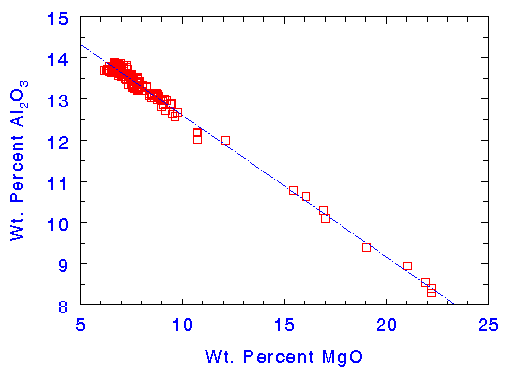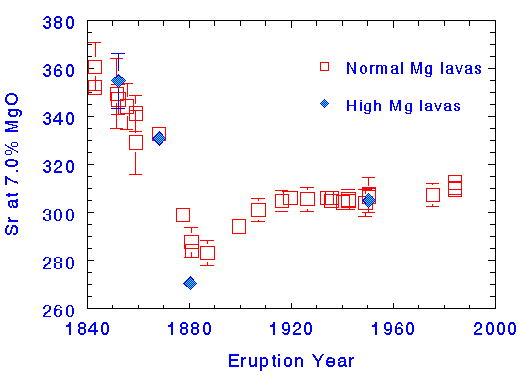
Abstract. Over the past 152 years, Mauna Loa volcano has erupted lavas with almost constant major element, and compatible and moderately incompatible trace element abundances at a given MgO content. This uniformity is attributed to continuing replenishment of a shallow magma reservoir. In contrast, incompatible element abundances and ratios, together with Sr, Nd and Pb isotopic ratios, vary systematically with time. The greatest rate of change occurred at a time (1843-1887) when Mauna Loa was vigorously active with high eruption rates, presumably a consequence of a high magma supply rate. Detailed analysis confirms what is evident from the isotopic data: that this open-system magmatism requires two or more parental magmas. One has the compositional attributes of lavas erupted in 1843, the other the characteristics of lavas erupted at the summit early in 1880. All other historical lavas can be considered as mixtures of these two end-members, modified by contemporaneous eruption and olivine crystallization. Both parental magmas have Sr, Pb and Nd isotopic ratios typical of magmas in the Hawaiian tholeiitic array, and intermediate between those of Kilauea and Koolau lavas, the end-members of the array. The 1843 parental magma has incompatible element ratios that are similar to, and overlap with the Koolau and Kilauea data. The inferred 1880 parental magma, however, is more depleted than the 1843 parental magma (and most other Hawaiian lavas), and is also isotopically closer to the Kilauea end-member of the tholeiitic array. The origin of these parental magmas is discussed in terms of melting within a radially heterogeneous plume in which the heterogeneity may develop at the source or through subsequent mantle entrainment. Two models are explored, both depend on the location of Mauna Loa at, or close to the plume margin. In the simplest case the parental magmas are produced by progressive melting of the heterogeneous outer plume. The second model is more dynamic, involving melt production and re-equilibration in a diverging, or inclined, plume.



